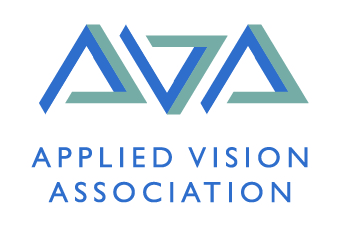

I'm very delighted to have been awarded with Geoffrey J. Burton Memorial Award which has helped me to attend the VSS annual meeting held in Florida, USA in May 2008. VSS conference is one of the biggest events, attracting over a thousand attendants from all of globe. Not only does it cover almost every aspect of vision science, but it also attracts some of the most talented in this field. From animal physiology to psychophysics, from brain imaging to pure mathematics, researchers come to demonstrate their latest findings on human vision. Attending a major conference such as this one also means that I could have chances talking to those who I would call "celebrities" in my area. Their advices were often very enlightening and encouraging. In fact some of the advices have helped me to put my current research a step forward.
Since my area of interest is monocular cues in 3-D vision, I had to miss out many good talks and posters in other topics but to focus on those that was of particular interest to me. I was not disappointed at all as I had been enlightened by many new ideas and fresh breaths in related studies by some smartest brains in the world. For example, in a talk by Roland Fleming, he demonstrated a new methodology of studying the problem of Shape-from-X. Instead of examining a particular cue and measure human’s performance on its basis, he measured a particular image statistics under changing surface reflectance and illumination. The new idea is that if a certain type of image statistics varies systematically with properties of 3-D shapes, but in the mean while remains stable to changes in other properties, then this measurement is supposed to be diagnostic in 3-D shape perception. One type of measurement found in the study was local image orientation which links to the direction in which local surface curvature is minimal. What is remarkable is that such measurement could not only predict one type of depth cue but it predicts well to 3-D shapes defined by a range of cues including shading, specularity and texture. The novelty of this study is that it takes a new methodology to study 3-D perception and it has managed to introduce a new visual regularity in 3-D shapes which would have been difficult to identify with conventional ways of investigations.
Another fascinating aspect of VSS 2008 was its cross-disciplinary characteristic. I was even able to find a group of mathematicians presenting their new proposal for mathematically modeling simple cell receptive fields. The study was novel as in it formulated the criteria for a good model of simple cell receptive field and it proposed two classes of models alternative to the traditional Gabor filter. One class of models was a generalization of the traditional Gabor filter but it was superior in that it is perfectly DC balanced. The other class of models also has some interesting properties. For example, it has a sector of orientations such that its responses to sinusoids at those orientations are zero.
Of course I also got to know quite a few junior researchers like myself. Communications with them were pleasant and enjoyable because of the common interests, which you may find not so easy in your own department. Time outside the conference site was also entertaining, educational and full of fun. The event of “Illusion of the year” competition normally takes place in the same city and not surprisingly majority of the audience are from the conference.
I'm very glad that I could have such a beneficial experience at my early stage of research. In addition to the valuable comments and suggestions on my current work, it helps me to build up confidence, interact with my peers and gain motivations on my research. Once again, I would like to thank AVA's Geoffrey J. Burton Memorial Award for having made this wonderful trip possible.